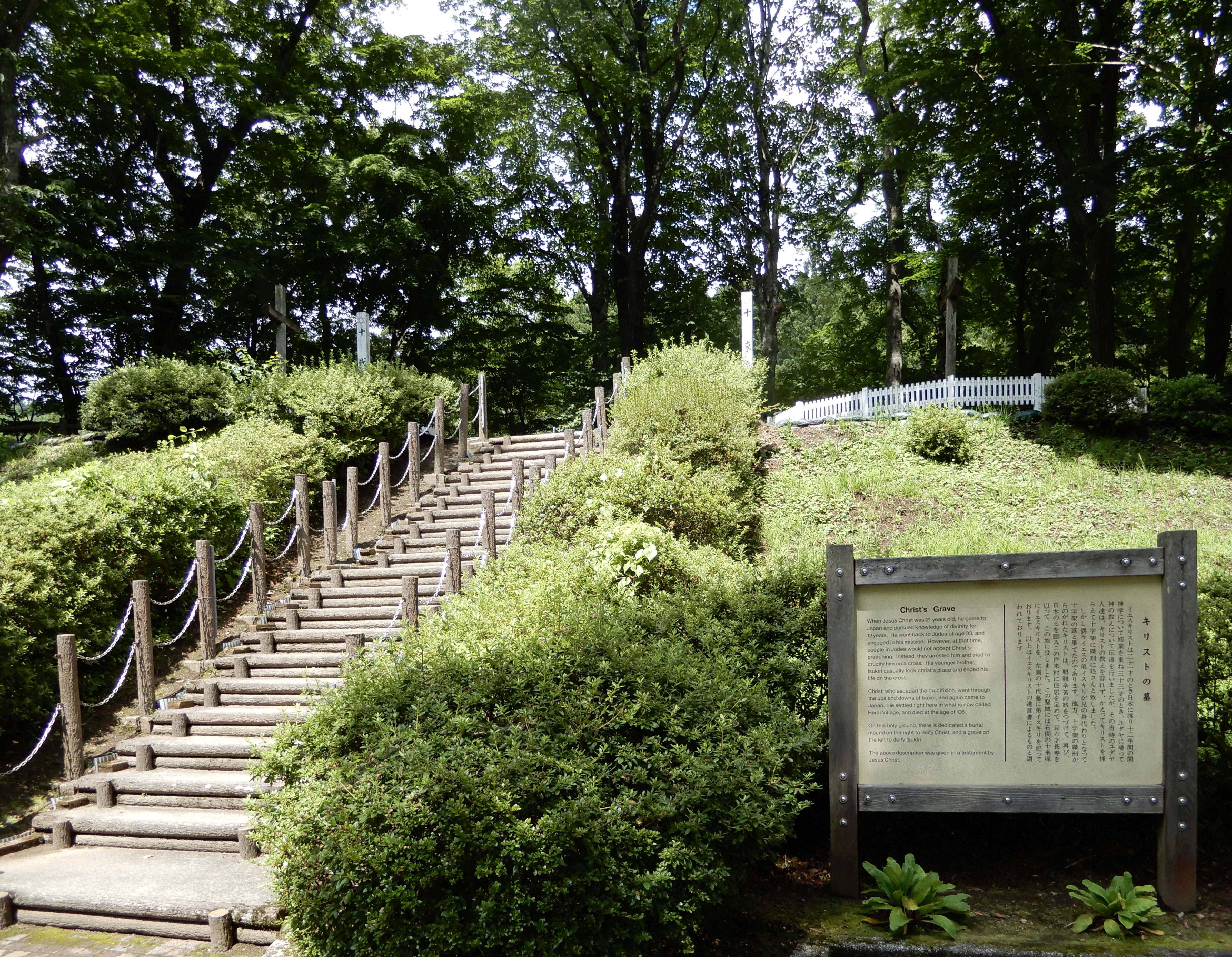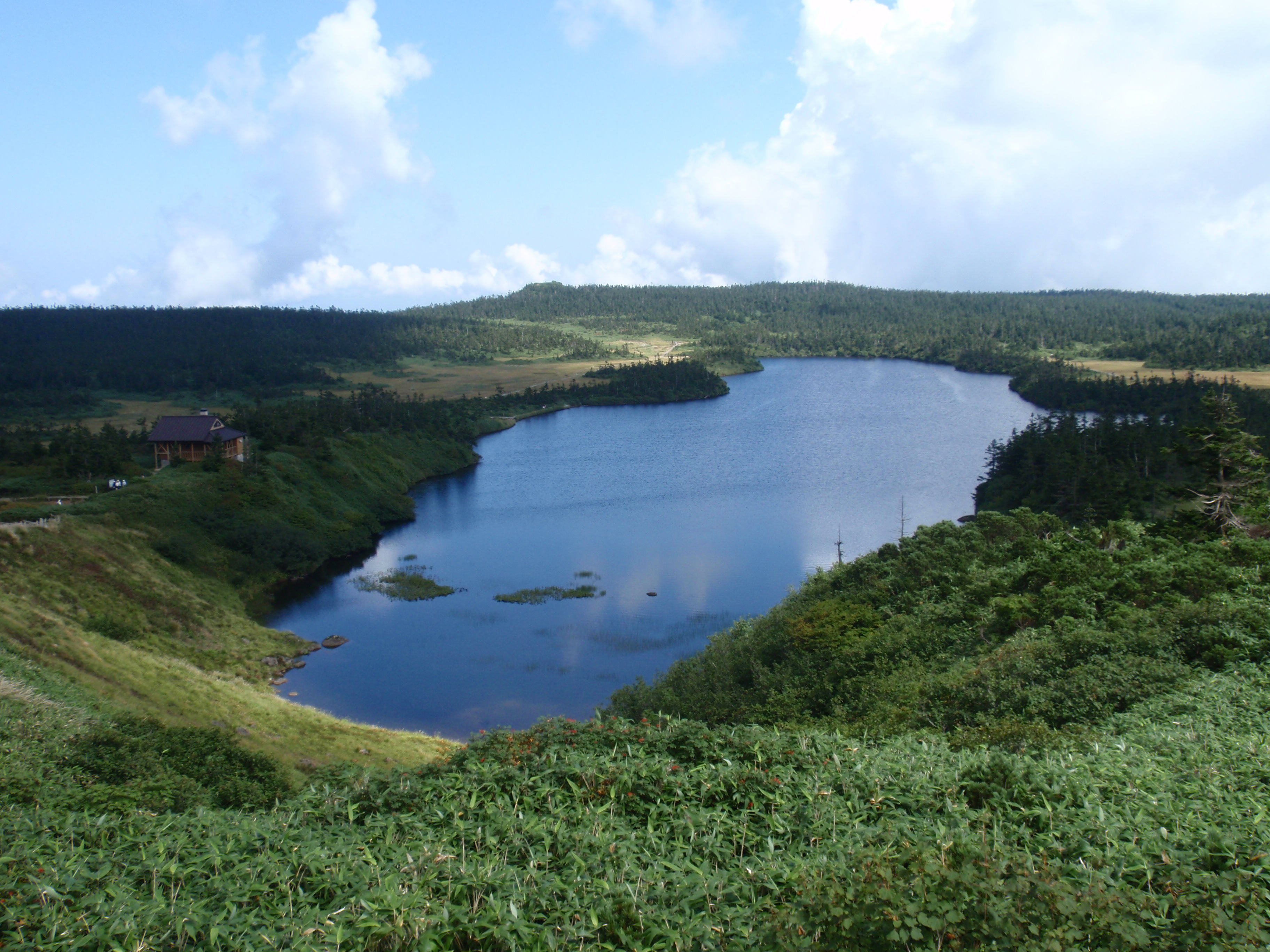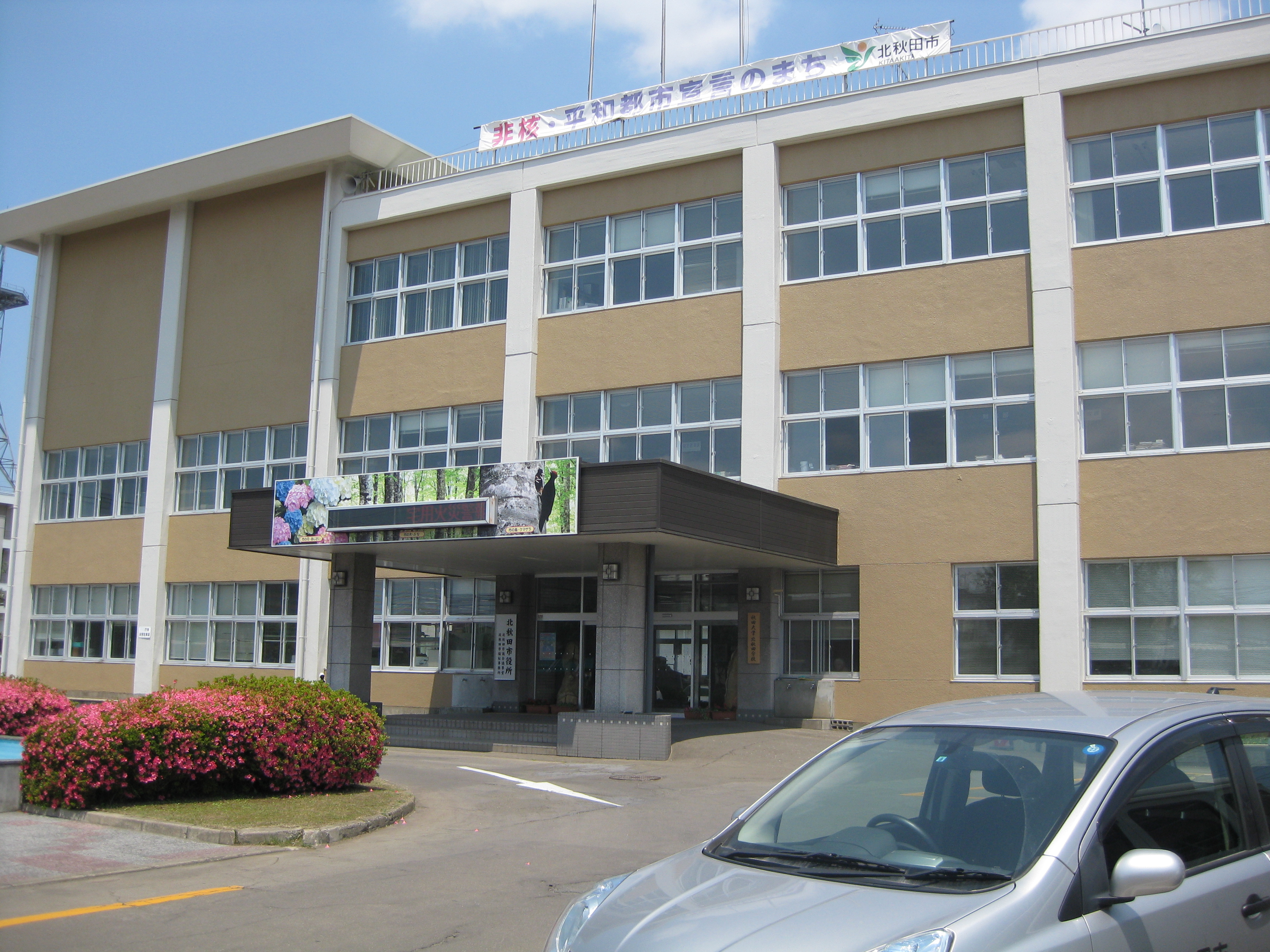|
Kazuno, Akita
is a cities of Japan, city located in Akita Prefecture, Japan. , the city had an estimated population of 30.715, and a population density of 43 persons per km² in 12.970 households. The total area of the city is . Geography Kazuno is located in a valley in the mountains of far northeastern Akita Prefecture, with the Ōu Mountains and Iwate Prefecture on the east. Much of the city is within the borders of the Towada-Hachimantai National Park. Much of the city area is covered in forest. Due to its inland location, the city is noted for its Snow country (Japan), heavy snowfall in winter. It is also known for the wild deer. Neighboring municipalities * Akita Prefecture ** Kitaakita, Akita, Kitaakita ** Ōdate, Akita, Ōdate ** Semboku, Akita, Semboku ** Kosaka, Akita, Kosaka * Iwate Prefecture ** Hachimantai, Iwate, Hachimantai * Aomori Prefecture ** Towada, Aomori, Towada ** Takko, Aomori, Takko ** Sannohe, Aomori, Sannohe ** Shingō, Aomori, Shingō Climate Kazuno has a humid co ... [...More Info...] [...Related Items...] OR: [Wikipedia] [Google] [Baidu] |
Cities Of Japan
A is a local administrative unit in Japan. Cities are ranked on the same level as and , with the difference that they are not a component of . Like other contemporary administrative units, they are defined by the Local Autonomy Law of 1947. City status Article 8 of the Local Autonomy Law sets the following conditions for a municipality to be designated as a city: *Population must generally be 50,000 or greater (原則として人口5万人以上) *At least 60% of households must be established in a central urban area (中心市街地の戸数が全戸数の6割以上) *At least 60% of households must be employed in commerce, industry or other urban occupations (商工業等の都市的業態に従事する世帯人口が全人口の6割以上) *Any other conditions set by prefectural ordinance must be satisfied (他に当該都道府県の条例で定める要件を満たしていること) The designation is approved by the prefectural governor and the Minister for Internal ... [...More Info...] [...Related Items...] OR: [Wikipedia] [Google] [Baidu] |
Ōu Mountains
The are a mountain range in the Tōhoku region of Honshū, Japan. The range is the longest range in Japan and stretches south from the Natsudomari Peninsula of Aomori Prefecture to the Nasu volcanoes at the northern boundary of the Kantō region. Though long, the range is only about wide. The highest point in the range is Mount Iwate, . The range includes several widely known mountains: Hakkōda Mountains, Mount Iwate, Mount Zaō, Mount Azuma, Mount Yakeishi, and Mount Adatara. Naming These mountains previously formed the boundary between historical provinces of Mutsu (陸奥国) and Dewa (出羽国). The ''kanji'' for the name of the mountain range was created from one ''kanji'' of the two provinces, 奥 and 羽, respectively. Geology The Ōu Mountains began to form in the Pliocene. They sit over the middle of the inner arc of the Northeastern Japan Arc. This is the result of the Pacific Plate subducting under the Okhotsk Plate The Okhotsk Plate is a minor tect ... [...More Info...] [...Related Items...] OR: [Wikipedia] [Google] [Baidu] |
Humid Continental Climate
A humid continental climate is a climatic region defined by Russo-German climatologist Wladimir Köppen in 1900, typified by four distinct seasons and large seasonal temperature differences, with warm to hot (and often humid) summers and freezing cold (sometimes severely cold in the northern areas) winters. Precipitation is usually distributed throughout the year but often do have dry seasons. The definition of this climate regarding temperature is as follows: the mean temperature of the coldest month must be below or depending on the isotherm, and there must be at least four months whose mean temperatures are at or above . In addition, the location in question must not be semi-arid or arid. The cooler ''Dfb'', ''Dwb'', and ''Dsb'' subtypes are also known as hemiboreal climates. Humid continental climates are generally found between latitudes 30° N and 60° N, within the central and northeastern portions of North America, Europe, and Asia. They are rare and isolat ... [...More Info...] [...Related Items...] OR: [Wikipedia] [Google] [Baidu] |
Shingō, Aomori
is a village located in Aomori Prefecture, Japan. , the village has an estimated population of 2,408 in 922 households and a population density of 16 persons per km² (42 people per square mile). The total area of the village is . Geography Shingō is in south-central Aomori Prefecture, east of Lake Towada. The western edge of the village borders Akita Prefecture. Much of the village is mountainous with the outer ring mountains of Lake Towada, including Mt. Okomagatake () and Mt. Toraidake (). The village area extends along National Route 454, which connects Hachinohe, Aomori Prefecture and Lake Towada. Neighboring municipalities *Aomori Prefecture **Towada ** Sannohe District ***Gonohe *** Nanbu ***Sannohe *Akita Prefecture **Kazuno Climate The village has a cold humid continental climate characterized by cool short summers and long cold winters with very heavy snowfall (Köppen climate classification ''Dfa''). The average annual temperature in Shingō is . The average annual ... [...More Info...] [...Related Items...] OR: [Wikipedia] [Google] [Baidu] |
Sannohe, Aomori
is a town located in Aomori Prefecture, Japan. , the town had an estimated population of 9,814 in 4260 households, and a population density of 65 persons per km2. The total area of the town is . Geography Sannohe occupies an inland area in southeast corner of Aomori Prefecture, south of the Hakkōda Mountains. The terrain is relatively flat, with mountains extending in the northwestern part of the town. The Mabechi River flows from north to south through the center of the town. Neighbouring municipalities Aomori Prefecture * Nanbu *Takko * Shingō Iwate Prefecture * Ninohe Akita Prefecture *Kazuno Climate The town has a cold maritime climate characterized by cool short summers and long cold winters with heavy snowfall (Köppen climate classification ''Cfa''). The average annual temperature in Sannohe is 10.2 °C. The average annual rainfall is 1259 mm with September as the wettest month. The temperatures are highest on average in August, at around 22.9 °C, and ... [...More Info...] [...Related Items...] OR: [Wikipedia] [Google] [Baidu] |
Takko, Aomori
is a town located in Aomori Prefecture, Japan. , the town had an estimated population of 5,353, and a population density of 22 persons per km2, in 2,142 households. The total area of the town is . Geography Takko occupies the far southeast corner of Aomori Prefecture, south of the Hakkōda Mountains. Much of the town is mountainous with peaks ranging from 700 to 1000 meters. The mountainous area is home to many indigenous plant and animal species. Wildlife includes Japanese macaque monkeys, '' kamoshika,'' ''tanuki,'' and Asian black bears. Neighbouring municipalities Aomori Prefecture * Sannohe District **Sannohe Iwate Prefecture * Ninohe * Hachimantai Akita Prefecture *Kazuno Climate The town has a cold Humid continental climate characterized by cool, short summers and long, cold winters with extremely heavy snowfall (Köppen climate classification ''Dfa''). The average annual temperature in Takko is 8.8 °C. The average annual rainfall is 1375 mm with September ... [...More Info...] [...Related Items...] OR: [Wikipedia] [Google] [Baidu] |
Towada, Aomori
is a Cities of Japan, city in Aomori Prefecture, Japan. , the city had an estimated population of 60,697, and a population density of 84 persons per km2 in 27,677 households. The total area of the city is . Geography Towada is in the foothills of the Hakkōda Mountains and encompasses the Aomori portion of Lake Towada. The Oirase River passes through the town. Towada is an area rich in nature. To the west are Towada-Hachimantai National Park. In particular, Lake Towada and the Oirase River are famous tourist spots. As for industry, agriculture is thriving, and the city produces the largest amount of garlic in Japan. The central part of the city is characterized by its orderly grid-like streets. In particular, "Government Office Street" is a popular place for citizens to enjoy the Someiyoshino (Japanese cherry) trees planted along the street. In recent years, the city has been promoting its urban policy as a "Arts Towada," with the Towada Art Center (Art museum) as its centerpiec ... [...More Info...] [...Related Items...] OR: [Wikipedia] [Google] [Baidu] |
Hachimantai, Iwate
is a city located in Iwate Prefecture, Japan. , the city had an estimated population of 25,076, and a population density of 29 persons per km2 in 10,531 households. The total area of the city is . Geography Hachimantai is located in the Ōu Mountains of far northwest Iwate Prefecture, bordered by Aomori Prefecture to the north and Akita Prefecture to the west. The headwaters of the Yoneshiro River are in Hachimanai. Part of Mount Hachimantai and Mount Iwate are within its borders. Parts of the city are within the borders of the Towada-Hachimantai National Park. Mount Iwate, the highest mountain in Iwate Prefecture, is on the border of Hachimantai with Shizukuishi and Takizawa. Neighboring municipalities Aomori Prefecture *Takko Akita Prefecture *Kazuno * Semboku Iwate Prefecture *Morioka * Ninohe * Takizawa * Ichinohe * Iwate *Shizukuishi Climate Hachimantai has a humid continental climate (Köppen climate classification ''Dfa''), the same as much of Hokkaido to the north, cha ... [...More Info...] [...Related Items...] OR: [Wikipedia] [Google] [Baidu] |
Kosaka, Akita
is a town located in Akita Prefecture, Japan. , the town had an estimated population of 4,646 in 2,368 households, and a population density 23 persons per km². The total area of the town is . In 2016, Kosaka was selected as one of The Most Beautiful Villages in Japan. Geography Kosaka is located in the Ōu Mountains the mountains of far northeastern Akita Prefecture, with Aomori Prefecture on the north, and Lake Towada to the northeast. Much of the town is within the borders of the Towada-Hachimantai National Park. Much of the town area is covered in forest. Due to its inland location, the town is noted for its heavy snowfall in winter. Neighboring municipalities *Akita Prefecture **Kazuno **Ōdate *Aomori Prefecture ** Hirakawa **Towada Demographics Per Japanese census data, the population of Kosaka has declined by more than two-thirds since 1960. Climate Kosaka has a cold Humid continental climate characterized by cool short summers and long cold winters with heavy snowf ... [...More Info...] [...Related Items...] OR: [Wikipedia] [Google] [Baidu] |
Semboku, Akita
is a city located in Akita Prefecture, Japan. , the city had an estimated population of 25,857 in 10,584 households, and a population density of 24 persons per km2. The total area of the city is . Geography Semboku is located in the mountains of central Akita Prefecture, bordering on Iwate Prefecture and the Ōu Mountains on the east. Lake Tazawa, the deepest lake in Japan, is located in the center of the city borders. Parts of the city are within the borders of the Towada-Hachimantai National Park. Neighboring municipalities *Akita Prefecture **Akita **Kitaakita **Kazuno ** Daisen *Iwate Prefecture ** Hachimantai **Shizukuishi ** Nishiwaga Climate Semboku has a Humid continental climate (Köppen climate classification ''Dfa'') with large seasonal temperature differences, with warm to hot (and often humid) summers and cold (sometimes severely cold) winters. Precipitation is significant throughout the year, but is heaviest from August to October. The average annual temperature ... [...More Info...] [...Related Items...] OR: [Wikipedia] [Google] [Baidu] |
Kitaakita, Akita
is a city located in Akita Prefecture, Japan. , the city had an estimated population of 31,504 in 14,021 households, and a population density of 27 persons per km². The total area of the city is . Geography Kitaakita is located in the mountains of northeastern Akita Prefecture, with the Ōu Mountains on the east. Part of the city is within the borders of the Towada-Hachimantai National Park. Much of the city area is covered in forest. Due to its inland location, the city is noted for its heavy snowfall in winter. It is approximately 80 kilometers northeast of Akita City, the prefectural capital. Neighboring municipalities *Akita Prefecture **Akita **Ōdate ** Noshiro **Kazuno ** Semboku ** Kamikoani ** Fujisato Climate Kitaakita has a humid continental climate (Köppen climate classification ''Dfa'') with large seasonal temperature differences, with warm to hot (and often humid) summers and cold (sometimes severely cold) winters. Precipitation is significant throughout the y ... [...More Info...] [...Related Items...] OR: [Wikipedia] [Google] [Baidu] |


_(3800529489).jpg)

